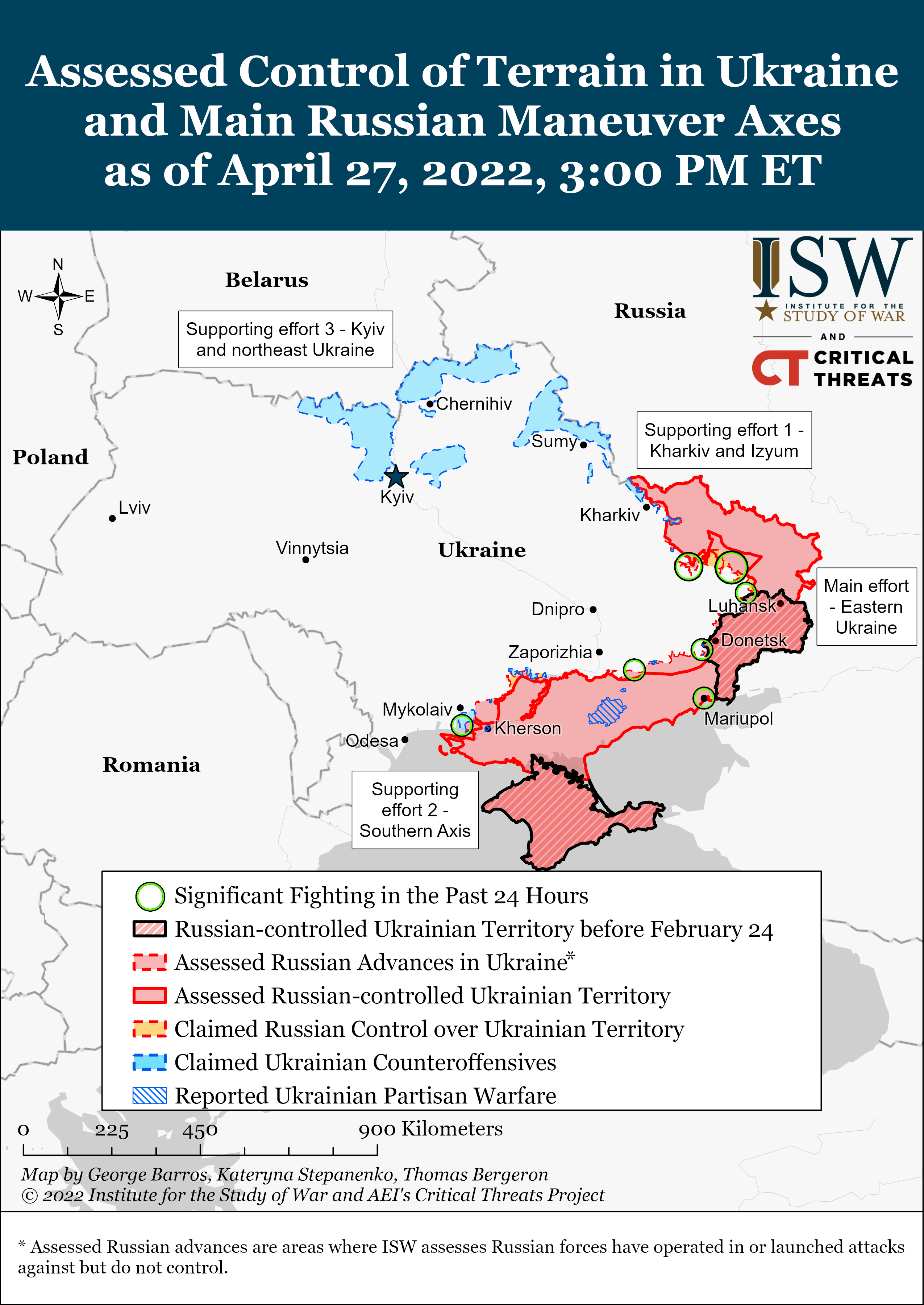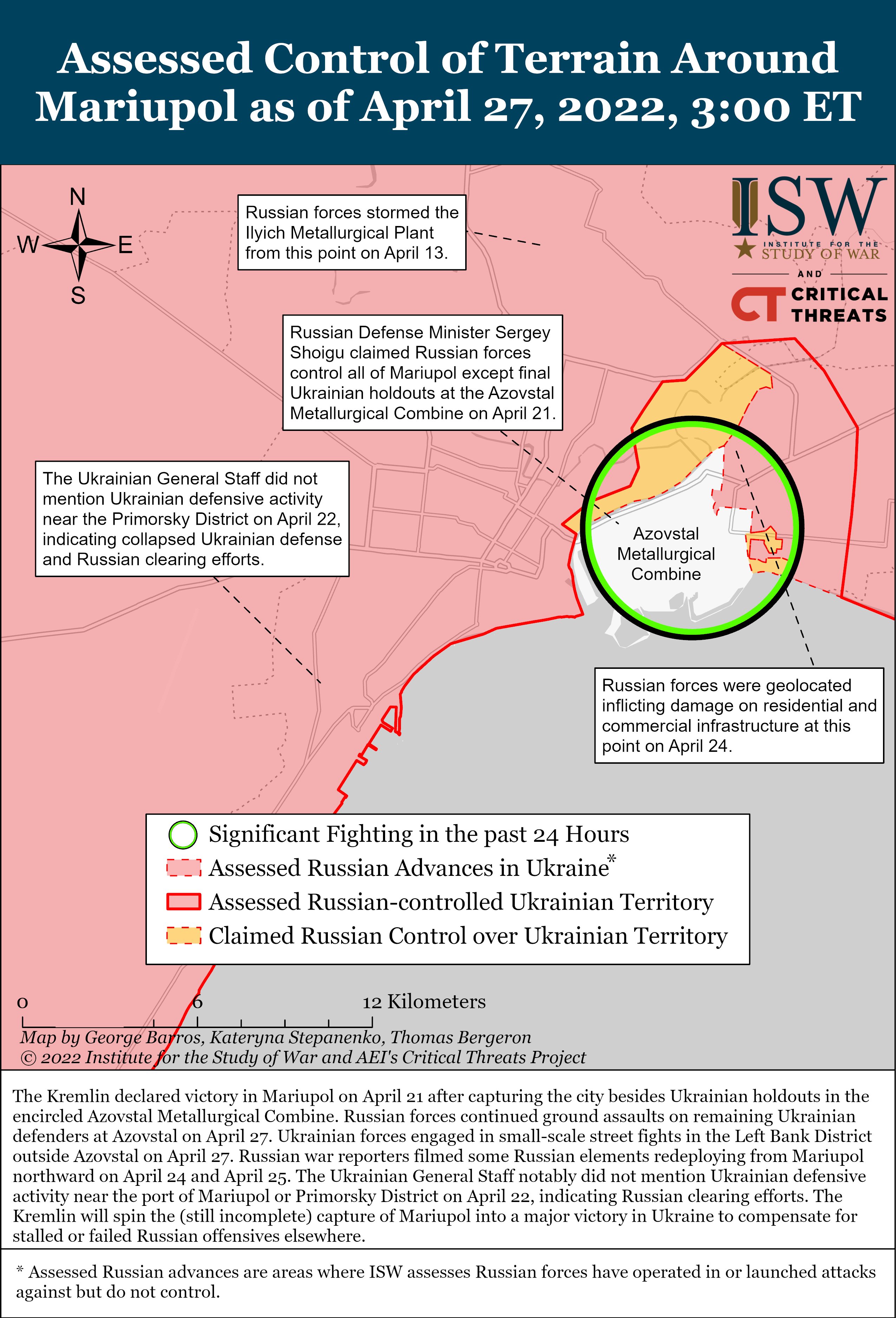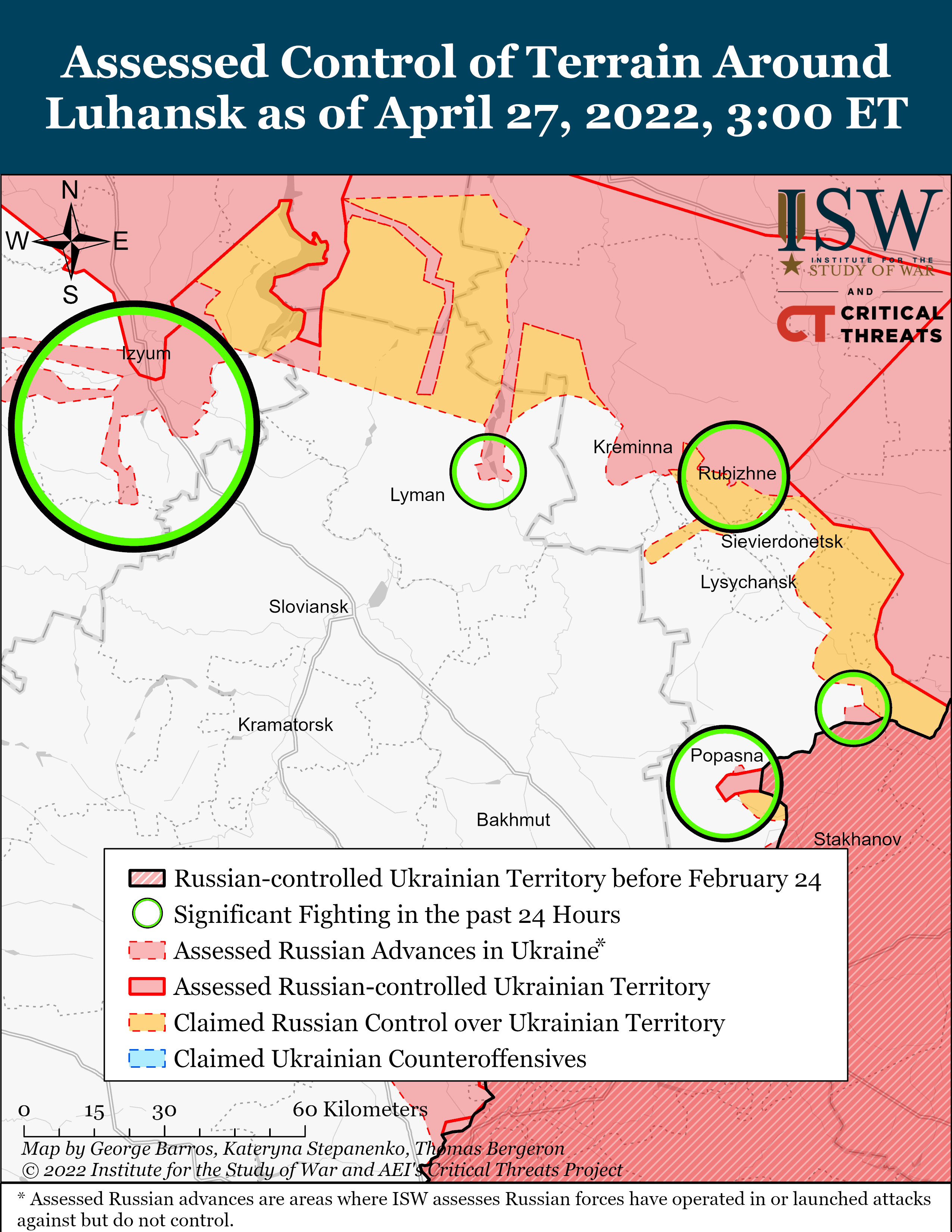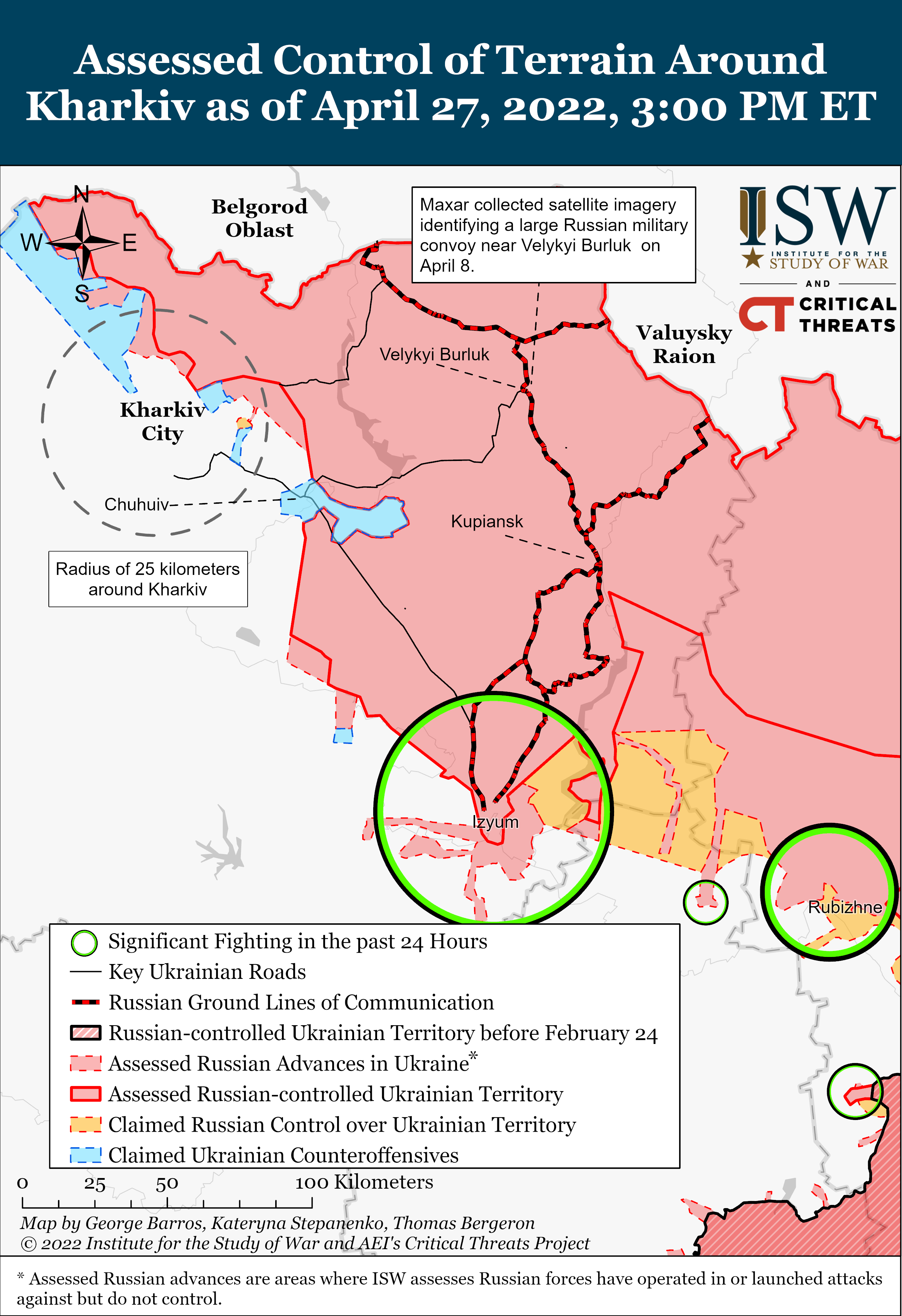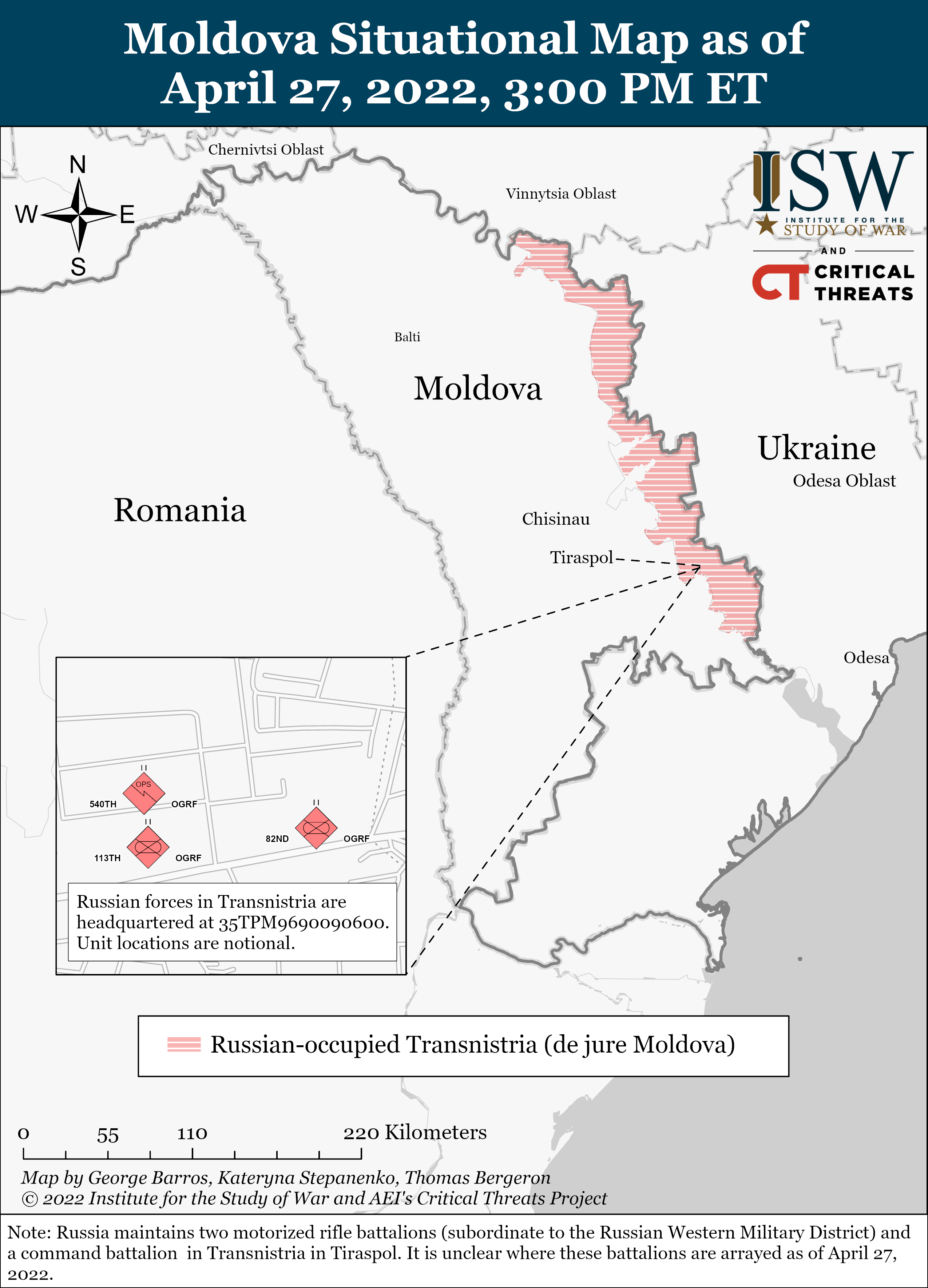GOOGLE TO GLIMPSE THE WAR
(P) TOM COOPER UKRAINE WAR:
https://medium.com/@x_TomCooper_x/ukraine-war-25-26-april-2022-aa0c1122320e
(Q) RUSSIA & UKRAINE'S PROGRESSIVE DISPOSITIONS:
https://upload.wikimedia.org/wikipedia/commons/4/4f/2022_Russian_invasion_of_Ukraine.svg
(R) WAR ACTIVE ZONES LIVE ON MAP:
SOURCE:
(A) https://www.understandingwar.org/
(B) https://www.understandingwar.org/backgrounder/russian-offensive-campaign-assessment-april-27
(C) https://www.understandingwar.org/user/3100/track
(D) GRAPHIC PRESENTATION:
https://www.graphicnews.com/en/pages/42526/Russian_offensive_campaign_assessment_%E2%80%93_day_33?utm_source=dlvr.it&utm_medium=twitter&utm_campaign=gngraphicnews
(E) Russia Military: Quick Reference Guide: https://irp.fas.org/world/russia/tradoc-refguide.pdf
(F )UKRAINE WAR LIVE ON MAP; https://liveuamap.com/
(G) ALL WORLD WAR ACTIVE ZONES LIVE ON MAP: https://t.co/63fVbMXIWl
INDEX
( ) ORBAT : https://bcvasundhra.blogspot.com/2022/03/section-2-revised-23-mar-2022-orbat.html
(1) HOT ENGAGEMENTS: https://bcvasundhra.blogspot.com/2022/03/list-of-military-engagements-during.html
( ) TIME LINE : https://bcvasundhra.blogspot.com/2022/03/a-timeline-of-2022-russian-invasion-of.html
( ) MAR 25: https://bcvasundhra.blogspot.com/2022/03/march-25-assessment-russian-offensive.html
( ) MAR 27: https://bcvasundhra.blogspot.com/2022/03/march-27-assessment-russian-offensive.html
( ) MAR 28: https://bcvasundhra.blogspot.com/2022/03/source-b-c-index-1-httpsbcvasundhra.html
( ) MAR 29: https://bcvasundhra.blogspot.com/2022/03/march-29-assessment-russian-offensive.html
( ) MAR 30: https://bcvasundhra.blogspot.com/2022/03/march-30-assessment-russian-offensive.html
( ) MAR 31: https://bcvasundhra.blogspot.com/2022/04/march-31-assessment-russian-offensive.html
( ) APR 01 : https://bcvasundhra.blogspot.com/2022/04/april-o1-assessment-russian-offensive.html
( ) APR 02 : https://bcvasundhra.blogspot.com/2022/04/april-o2-assessment-russian-offensive.html
( ) APR 03 : https://bcvasundhra.blogspot.com/2022/04/blog-post.html
( ) APR 04 : https://bcvasundhra.blogspot.com/2022/04/april-o4-assessment-russian-offensive.html
( ) APR 05 : https://bcvasundhra.blogspot.com/2022/04/april-o5-assessment-russian-offensive.html
( )APR 06 : ((i) https://bcvasundhra.blogspot.com/2022/04/april-o6-assessment-russian-offensive.html
( ) APR 06: (ii) https://bcvasundhra.blogspot.com/2022/04/situation-on-06-apr-2022-on-ukrainian.html
( ) APR 07: https://bcvasundhra.blogspot.com/2022/04/april-o7-assessment-russian-offensive.html
( ) APR 08: https://bcvasundhra.blogspot.com/2022/04/file-attachments.html
( ) APR 09 : https://bcvasundhra.blogspot.com/2022/04/assessments-special-edition-russian.html
( ) APR 10: https://bcvasundhra.blogspot.com/2022/04/source-b-c-d-graphic-presentation.html
( ) APR 11: https://bcvasundhra.blogspot.com/2022/04/apr-11-2022-surmising-revised-russian.html
( ) APR 12: https://bcvasundhra.blogspot.com/2022/04/assessment-russian-offensive-campaign.html
( ) APR 13: https://bcvasundhra.blogspot.com/2022/04/assessment-russian-offensive-campaign_13.html
RUSSIAN ARMY LITERATURE
( A ) THE RUSSIAN WAY OF WAR: https://www.armyupress.army.mil/portals/7/hot%20spots/documents/russia/2017-07-the-russian-way-of-war-grau-bartles.pdf
( B ) 2017- The Russian Force Structure, Tactics and Modernization of the Russian Ground Forces https://community.apan.org/wg/tradoc-g2/fmso/m/fmso-books/199251#
( C ) The Russian Army and Maneuver Defense :
https://community.apan.org/wg/tradoc-g2/fmso/m/fmso-monographs/376503
(D)THE RUSSIAN WAY OF WAR
https://www.google.com/search?q=2017-07-the-russian-way-of-war-grau-bartles.pdf&rlz=1C1CHBD_enIN988IN988&sourceid=chrome&ie=UTF-8
( E ) ORBITS WORLD BATTLES :
https://en.wikipedia.org/wiki/Category:Orders_of_battle
(F) (U) Russian Forces in the Western Military District https://www.cna.org/CNA_files/PDF/Russian-Forces-in-the-Western-Military-District.pdf
(G) Russian Ground Forces OOB_ISW CTP_0.pdf https://www.understandingwar.org/sites/default/files/Russian%20Ground%20Forces%20OOB_ISW%20CTP_0.pdf
(H) Russia Military: Quick Reference Guide: https://irp.fas.org/world/russia/tradoc-refguide.pdf
(J) 2017-07-the-russian-way-of-war-grau-bartles.pdf https://www.armyupress.army.mil/portals/7/hot%20spots/documents/russia/2017-07-the-russian-way-of-war-grau-bartles.pdf
ASSESSMENT
RUSSIAN OFFENSIVE CAMPAIGN
APR 27,2022
MASON CLARK, GEORGE BARROS,
AND
KATERYNA STEPANENKO
Russian forces made minor but steady advances both from Izyum and in continued assaults along the line of contact in eastern Ukraine on April 27. Russian forces took several small towns directly west of Izyum in the past 24 hours. While this line of advance takes Russian forces away from their main objective of Donetsk and Luhansk Oblasts, they likely intend to outflank Ukrainian defensive positions on the highways to Barvinkove and Slovyansk. Russian forces made several small advances in eastern Ukraine; Russia’s increasing concentration of artillery assets is likely enabling these tactical advances. Russian forces are advancing methodically in several sectors but have achieved no notable breakthroughs. The capability of Russian forces to encircle large groups of Ukrainian forces remains in doubt.
The Kremlin continued to prepare for a likely false-flag missile attack against the Moldovan territory of Transnistria, which is illegally occupied by Russian forces. Russian proxies in Transnistria falsely claimed Ukrainian forces are preparing to attack Transnistria, and Ukrainian intelligence reported Russian forces are preparing to conduct a missile strike on Transnistria and blame Ukraine. Russian and Transnistrian forces also increased their readiness for possible operations in the last 24 hours. Russia may intend to involve Transnistria in the war in Ukraine to utilize Transnistria’s (limited) reserve forces or to launch attacks and shell Ukraine from the Transnistrian territory. The Kremlin may alternatively seek to destabilize Moldova itself to raise tensions in Moldova and neighbouring Romania and put additional pressure on NATO, possibly seeking to reduce Western military support to Ukraine either by diverting NATO forces to Romania or threatening a wider escalation.
Russian forces are stepping up “filtration measures” in occupied territories and abducting Ukrainian citizens, likely for use in future prisoner exchanges. Ukraine’s Main Intelligence Directorate (GUR) reported on April 27 that Russian forces are conducting large-scale “filtration measures” in Kharkiv, Zaporizhia, Kherson, Mykolaiv, Luhansk, and Donetsk Oblasts.[1] The “filtration” targets men of military age, former military and law enforcement personnel, and pro-Ukrainian activists for interrogation, torture, and possible execution. The GUR reported Russian forces are additionally shipping Ukrainian hostages to Crimea to “replenish the exchange fund,” seeking to exchange Ukrainian civilians for Russian military prisoners in future prisoner swaps. The GUR additionally speculated that Russian forces may be preparing to use Ukrainian civilians to portray Prisoners of War in May 9th Victory Day celebrations, noting that Russian forces conducted similar propaganda efforts in Donetsk in 2014.
Ukrainian forces likely conducted drone or possibly missile strikes on Russian logistics centers in Belgorod and Voronezh on April 27. Russian sources and social media reported multiple explosions early on April 27, which Ukrainian Presidential Advisor Mikhail Podolyak later euphemistically confirmed were Ukrainian strikes, stating Russian cities cannot “sit out” the invasion of Ukraine and “the disarmament of the Belgorod-Voronezh warehouses is a natural process.”[2] Ukrainian forces will likely conduct further cross-border strikes to disrupt Russian logistics, which the Kremlin will likely falsely frame as an escalation or somehow a war crime.
Key Takeaways
- Concentrated artillery is likely enabling limited Russian advances in eastern Ukraine, though Russian forces continue to struggle to break through prepared Ukrainian defenses.
- Russian forces funnelled additional reinforcements and tactical missile units into the Izyum front and made minor advances. Russian forces are likely attempting to bypass Ukrainian forces on the road to Barvinkove by advancing directly west before pivoting southwards in the coming days.
- Heavy Russian bombardment and continued assaults failed to make headway against Ukrainian defenders in Mariupol’s Azovstal plant, even as Russian forces reportedly prepared to stage a press tour in the occupied areas of the city in April 28.
- Russian forces around Kherson are likely preparing for a renewed push to capture the entirety of Kherson Oblast in the coming days but Ukrainian counterattacks continue to disrupt Russian operations in the area.
- Russian occupation forces continued preparations to announce the creation of a Russian proxy “Kherson People’s Republic” (KNR) amid widespread Ukrainian resistance.
- The Kremlin may be preparing to either bring Transnistria into the war in Ukraine or destabilize Moldova itself to put additional pressure on NATO.
We do not report in detail on Russian war crimes because those activities are well-covered in Western media and do not directly affect the military operations we are assessing and forecasting. We will continue to evaluate and report on the effects of these criminal activities on the Ukrainian military and population and specifically on combat in Ukrainian urban areas. We utterly condemn these Russian violations of the laws of armed conflict, Geneva Conventions, and humanity even though we do not describe them in these reports.
ISW has updated its assessment of the four primary efforts Russian forces are engaged in at this time:
- Main effort—Eastern Ukraine (comprised of two subordinate supporting efforts);
- Supporting effort 1—Kharkiv and Izyum;
- Supporting effort 2—Southern axis;
- Supporting effort 3—Sumy and northeastern Ukraine.
Main effort—Eastern Ukraine
Subordinate Main Effort—Mariupol (Russian objective: Capture Mariupol and reduce the Ukrainian defenders)
Russian forces continued ground and air assaults against Ukrainian defenders in Mariupol’s Azovstal Steel Plant on April 27. The Ukrainian military reported Russian forces continued to conduct a high tempo of air strikes against Ukrainian defenders, including by Tu-22M3 strategic bombers.[3] Advisor to the Mayor of Mariupol Petro Andryushchenko and the commander of the Ukrainian 36th Marine Brigade separately reported that Russian forces continued ground assaults on the Azovstal facility and that Ukrainian forces are running low on food, water, and ammunition.[4]
Russian forces are also stepping up occupation and “filtration” measures in Mariupol to consolidate control of the city and turn it into a propaganda victory.[5] Ukraine’s Main Intelligence Directorate (GUR) reported that the Kremlin will hold a press tour in Mariupol on April 28 for Kremlin-loyal outlets – including foreign journalists – including faked witness testimonials about the course of the battle.[6] Andryushchenko separately reported that Russian occupation forces are increasingly restricting civilian movement in Mariupol and “resorting to physical coercion and blackmail” to force Ukrainian citizens to work for the occupation regime.[7]
Subordinate Main Effort—Donetsk and Luhansk Oblasts (Russian objective: Capture the entirety of Donetsk and Luhansk Oblasts, the claimed territory of Russia’s proxies in Donbas)
Russian forces made marginal advances in frontal assaults around Severodonetsk, Rubizhne, and Popasna on April 27 and continued to shell the entire frontline.[8] The Ukrainian General Staff confirmed that Russian forces captured Novotoshkirske, a small town 25 km south of Severodonetsk, and attempted to advance further west.[9] Russian forces advancing south from the Svatove area (west of Rubizhne) additionally captured the town of Zarichne.[10] Ukrainian forces repelled Russian attacks in Avdiika, near Donetsk city.[11] Russian forces are making slow progress on these multiple small axes of advance, likely due to their increasing use of concentrated artillery, but their ability to encircle Ukrainian forces and the extent to which they will be able to advance remain unclear.
Supporting Effort #1—Kharkiv and Izyum: (Russian objective: Advance southeast to support Russian operations in Luhansk Oblast; defend ground lines of communication (GLOCs) to the Izyum axis)
Russian forces in Izyum continued attacks on three lines of advance – southeast towards Slovyansk, southwest towards Barvinkove, and directly west away from Donetsk Oblast – on April 27.[12] The Ukrainian General Staff reported that Ukrainian forces repelled Russian attacks near Nova Dmytrivka, towards Barvinkove, and repelled unspecified attacks towards Slovyansk.[13] The Ukrainian general Staff reported that elements of Russia’s 1st Guards Tank Army, 20th Combined Arms Army (CAA), 35th CAA, and 68th Army Corps are active on the Barvinkove front.[14] Two Battalion Tactical Groups (BTGs) from the 76th Airborne Division – which was heavily damaged in fighting northwest of Kyiv – deployed from Belgorod, Russia, to the Izyum frontlines on April 27.[15] The Ukrainian Ministry of Defense additionally reported that two Iskander-M ballistic missile batteries, likely in part from the 20th CAA’s 448th Missile Brigade, deployed to Belgorod Oblast from an unspecified location on April 27.[16]
Russian forces made territorial advances directly west of Izyum, capturing the town of Zavody and the outskirts of Velyka Komyshuvakha, 20km west of Izyum.[17] Russian forces west of Izyum most likely intended to pivot southwards and advance on Barvinvoke after completing the capture of Velyka Komyshuvakha, seeking to bypass Ukrainian defenses along the T2122 highway. These forces could alternatively attempt a deep encirclement of Ukrainian forces that is unlikely to succeed, as Russian forces pushing west of Izyum are moving away from the otherwise mutually-supporting Russian lines of advance roughly converging west of Severodonetsk.
Russian forces continued to partially encircle Kharkiv and shell civilian infrastructure across the oblast on April 27.[18]
Supporting Effort #2—Southern Axis (Objective: Defend Kherson against Ukrainian counterattacks)
Russian forces continued to shell along the entire line of contact along the southern axis and reinforce forward positions in preparation for the likely resumption of offensive operations towards Mykolayiv and Kryvyi Rih on April 27.[19] Ukrainian Ministry of Defense Spokesperson Oleksandr Motuzyanyk stated that elements of Russia’s 8thCAA, 49th CAA, 22nd Army Corps, coastal troops of the Black Sea Fleet, and airborne troops are reinforcing their forward positions and replenishing ammunition for further operations.[20] The Ukrainian General Staff added that Russian forces are actively conducting aerial reconnaissance in likely preparation for offensive operations.[21] Local fighting continued in the Mykolayiv direction, with Russian forces conducting failed attacks towards Tavriyske and Nova Zorya and Ukrainian forces reportedly recapturing Shyroke, Novopetrivka, and Lyubino, 50 km north of Kherson.[22] Russian forces are likely attempting to recohere forces to launch larger-scale offensive operations in the coming days to capture the entirety of Kherson Oblast, but successful Ukrainian counterattacks are likely delaying and disrupting Russian operations.
Russian occupation forces continued preparations to announce the creation of a “Kherson People’s Republic” (KNR) amid widespread Ukrainian resistance. The Ukrainian General Staff reported on April 27 that Russian forces are printing ballots and conducting a census for a “referendum” and preventing civilians from leaving the occupied territories.[23] Multiple Ukrainian government sources reported that Russian forces are taking several steps to crack down on possible resistance, including reports by the Pivden Operational Command on April 26 that Russian forces are appointing collaborators to local government positions; reports Rosgvardia forces stepped up filtration measures in Kiselivka and Stanislav; and reports that Russian forces are attempting to identify the places of residence of Ukrainian security personnel.[24] Local social media users additionally shared footage of a large protest against the creation of the KNR in Kherson’s Freedom Square on April 27.[25] The Kremlin likely intends to create further proxy states modeled on the DNR and LNR in Kherson and elsewhere to consolidate its control over occupied Ukrainian territory – both by creating an occupation government and by falsely claiming in negotiations that the territory is occupied by “independent” states, not Russian military forces.
Russian forces also continued to prepare for a likely false-flag missile attack against the Moldovan territory of Transnistria, which is illegally occupied by Russian forces. The Kremlin mobilized Transnistrian proxy forces on April 27 as Russian state media began setting rhetorical conditions for the possible recognition of the self-styled Pridnestrovian Moldavian Republic (PMR) in Transnistria. Russian media is increasingly reporting that Transnistria may need to “protect the interests of the republic” by declaring its independence, echoing language used by the Kremlin prior to its recognition of the DNR and LNR in mid-February.[26] Ukraine’s Pivden Operational Command directly claimed on April 27 that Russian forces are preparing to conduct false-flag missile strikes into Transnistria to accuse Ukraine of attacking the unrecognized republic.[27] Local Transnistrian officials and media reported unconfirmed gunshots and several claimed incidents of Ukrainian drones crossing into Transnistria; ISW cannot independently confirm these claims.[28] The Ukrainian General Staff reported that Transnistria announced a “red level” of threat, increased the readiness of its forces, and strengthened checkpoint security on April 27.[29]
Supporting Effort #3—Sumy and Northeastern Ukraine: (Russian objective: Withdraw combat power in good order for redeployment to eastern Ukraine)
There was no significant change in this area in the past 24 hours.
Immediate items to watch
- Russian forces attacking southeast from Izyum, west from Kreminna and Popasna, and north from Donetsk City will likely make steady but tactical gains against Ukrainian defenders.
- Russian forces will likely attempt to starve out the remaining defenders of the Azovstal Steel Plant in Mariupol and will not allow trapped civilians to evacuate but may conduct costly assaults on remaining Ukrainian defenders to claim a propaganda victory.
- Russian forces are likely preparing to conduct renewed offensive operations to capture the entirety of Kherson Oblast in the coming days.
- Russia may continue false-flag attacks in and around Transnistria or might move to generate a more serious crisis in Transnistria and Moldova more generally.
References
[1] https://www.facebook.com/DefenceIntelligenceofUkraine/posts/300052648972829.
[2] https://t.me/tass_agency/130257; https://t.me/stranaua/38776;
https://t.me/M_Podolyak/61?fbclid=IwAR2YisSID_hlZ1iIH8SGoOzZra_Uv4CwtP6J....
[3] https://www.facebook.com/GeneralStaff.ua/posts/303742171938868;
https://armyinform dot com.ua/2022/04/27/okupanty-ne-prypynyayut-zavdavaty-aviaudariv-po-mariupolyu-z-dalnih-bombarduvalnykiv-tu-22m3/;
[4] https://t.me/andriyshTime/511;
https://t.me/stranaua/38821; https://t.me/mariupolnow/8176
[5] https://www.facebook.com/GeneralStaff.ua/posts/303742171938868.
[6] https://www.facebook.com/DefenceIntelligenceofUkraine/posts/300120265632734.
[7] https://t.me/andriyshTime/512; https://t.me/andriyshTime/514.
[8] https://www.facebook.com/GeneralStaff.ua/posts/303742171938868;
https://t.me/luhanskaVTSA/2039; https://t.me/luhanskaVTSA/2052;
https://t.me/luhanskaVTSA/2039.
[9] https://www.facebook.com/GeneralStaff.ua/posts/303742171938868;
https://t.me/luhanskaVTSA/2039.
[10] https://www.facebook.com/GeneralStaff.ua/posts/303742171938868.
[11] https://t.me/pavlokyrylenko_donoda/3161;
https://twitter.com/RALee85/status/1519297991886008320.
[12] https://www.facebook.com/GeneralStaff.ua/posts/304045811908504;
[13] https://www.facebook.com/GeneralStaff.ua/posts/304045811908504;
[14] https://www.facebook.com/GeneralStaff.ua/posts/303742171938868.
[15] https://www.facebook.com/GeneralStaff.ua/posts/303742171938868.
[16] https://www.facebook.com/GeneralStaff.ua/posts/303742171938868;
https://armyinform dot com.ua/2022/04/27/u-byelgorodskij-oblasti-v-30-km-vid-kordonu-z-ukrayinoyu-rozgornuto-batareyu-otrk-iskander-m/.
[17] https://www.facebook.com/GeneralStaff.ua/posts/303742171938868; https://armyinform dot com.ua/2022/04/27/u-byelgorodskij-oblasti-v-30-km-vid-kordonu-z-ukrayinoyu-rozgornuto-batareyu-otrk-iskander-m/.
[18] https://www.facebook.com/GeneralStaff.ua/posts/303742171938868;
https://www.facebook.com/GeneralStaff.ua/posts/304045811908504.
[19] https://www.facebook.com/GeneralStaff.ua/posts/304045811908504;
https://www.facebook.com/GeneralStaff.ua/posts/303742171938868.
[20] https://armyinform dot com.ua/2022/04/27/na-kryvorizkomu-ta-mykolayivskomu-napryamkah-ochikuyetsya-aktyvizacziya-bojovyh-dij/.
[21] https://www.facebook.com/GeneralStaff.ua/posts/304045811908504;
https://www.facebook.com/GeneralStaff.ua/posts/303742171938868.
[22] https://www.facebook.com/watch/?v=1638107116541847;
https://www.unian.net/war/armiya-ukrainy-v-nikolaevskoy-oblasti-vernula-....
[23] https://www.facebook.com/GeneralStaff.ua/posts/304045811908504;
https://www.facebook.com/GeneralStaff.ua/posts/304045811908504.
[24] https://www.facebook.com/watch/?v=1638107116541847;
https://www.facebook.com/GeneralStaff.ua/posts/303742171938868; https://www.facebook.com/GeneralStaff.ua/posts/304045811908504.
[25] https://t.me/mykolaivskaODA/1175;
https://t.me/stranaua/38783; https://www.facebook.com/okPivden/posts/2042505722587337.
[26] https://twitter.com/KyivIndependent/status/1518885976721997825;
https://twitter.com/KyivIndependent/status/1518885978328506368.
[27] https://www.facebook.com/watch/?v=1185223818907103; https://www.facebook.com/watch/?v=1638107116541847.
[28] https://www.facebook.com/watch/?v=1638107116541847;
https://t.me/stranaua/38758; https://t.me/stranaua/38766;
https://t.me/stranaua/38772; https://t.me/tsvtiraspol/25000;
https://t.me/tsvtiraspol/25011.
[29] https://www.facebook.com/GeneralStaff.ua/posts/304045811908504;
https://t.me/krepostpmr/33521; https://www.facebook.com/watch/?v=163810711654184
